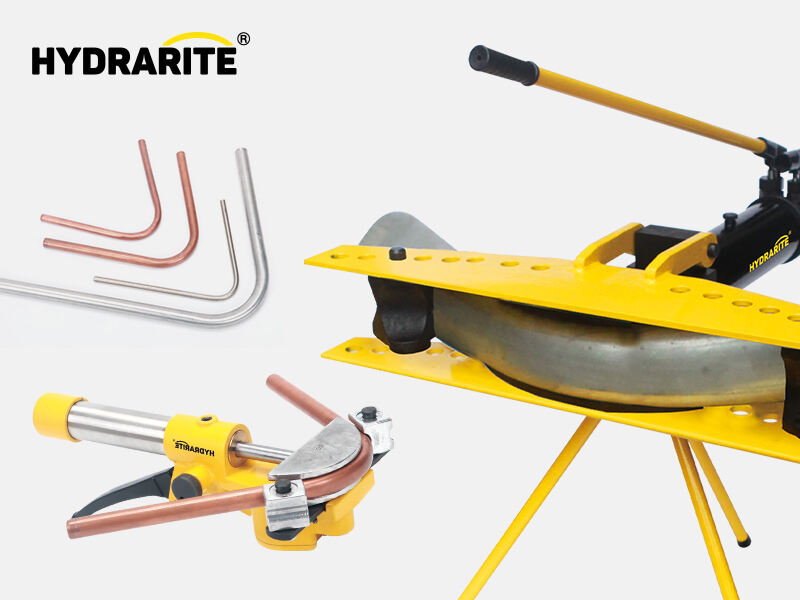S rastom chiropraktických služieb v moderných spoločnostiach sa rozšírili a vyvinuli aj súťažné sektory tejto odvetvia niekoľkými spôsobmi. Zvýšenie účinnosti času stráveného v kancelárii sa stalo prioritou. Stroje na ohýbanie sú len jednou z mnohých nástrojov, ktoré ne len uľahčujú proces, ale tiež zvyšujú presnosť a znížujú pravdepodobnosť straty materiálu. Tento článok sa zamýšľa nad rôznymi druhmi strojov používaných na ohýbanie, ako fungujú a aké výhody prinášajú spoločnostiam pôsobiacim v kovovej industrii.
Stavby na záhyb, alebo spôsobnejsie známe ako tlačové tvarovky, sú schopné zahýbať tyče a plechy do určitých uhlov a tvarov, ktoré si človek môže pripomenúť. Tieto stroje patria do kategórií ako elektrické, mechanické a tiež hydraulické. Každá z týchto kategórií má svoje využitie v priemyselnom prostredí. Napríklad hyperbolické hydraulické záhybové stroje používajú hydraulickú kapalinu na vytvorenie sily, čím sa uľahčí zahýbanie hrubejších materiálov. Okrem toho sú mechanické záhybové stroje tiež populárne kvôli svojej rýchlosti a úrovni produktivity, preto sa často používajú v nastaveniach hromadnej výroby.
Použitie ohýbačových strojov má mnoho výhod. Jednou z hlavných výhôd je, že zvyšujú efektívnosť výroby. Stroje sú schopné vykonať prácu s minimálnym alebo vôbec bez manuálneho zásahu, čo zvyšuje pracovnú efektívnosť a zároveň eliminuje chyby. Príklom sú hydraulické ohýbačové stroje, ktoré môžu byť nastavené tak, aby dosahovali presné ohýbanie s malou pomocou operátora, čo zvyšuje časovú efektívnosť a kvalitu produkcie. Tieto stroje sa tiež dajú programovať na vykonávanie komplexnejších úloh pri ohýbaní, čo pomáha ďalej optimalizovať pracovný postup.
Súčasné ohýbacie stroje majú vysokú stupeň presnosti, ktorá nesmie byť prehliadaná. V dôsledku vývoja technológií sú väčšina strojov vybavených systémami CNC alebo Počítačová Číslicová Regulácia. To umožňuje dosiahnuť komplexné dizajny a špecifikácie s vysokou úrovňou presnosti. Táto úroveň presnosti je veľmi dôležitá v leteckej a automobilovej prprene, keďže aj najmenšia ne presnosť môže spôsobiť vážne bezpečnostné riziká alebo nefunkčnosť produktu. Vybraním si dobré kvality ohýbacia stroje sú výrobcovia schopní splniť vysoké štandardy stanovené priemyslou.
Používanie ohnúvacích strojov má zmysel z hľadiska ekonomického účinnosťa podnikania. Hoci s nákupom nového zariadenia sú spojené náklady, ohnúvaci stroj môže významne znížiť náklady spojené s pracou, materiálmi a časom výroby v dlhodobom horizonte. Okrem toho väčšina nových strojov spotrebuje menej energie, čo umožňuje podnikom ďalej redukovať ich náklady. Rozšírené používanie energeticky úsporného zariadenia je strategicky výhodné pre podnikanie a pomáha spoločnostiam finančne, keď sa zvyšuje dôraz na ekologicky príznivé postupy.
Sledovanie týchto trendov a inovácií v oblasti obrábania kovov motivuje výrobcov, aby prispôsobili svoje procesy a strojníctvo. Automatizácia a začlenenie chytrého technológiu do výrobných procesov by mali získať na obľúbenosti. Stavby na ohyb sú rovnaké; mnohé modely teraz obsahujú IoT (Internet vecí) systémy, ktoré umožňujú používateľom monitorovať vybavenie zdalene a v reálnom čase. To ne len zlepšuje operačnú výkonnosť, ale tiež zvyšuje produktivitu tým, že robí informácie o dôležitých produkčných metrikách a kľúčových podnikateľských rozhodnutiach prístupné pre kontinuálne vylepšovanie procesu.
Stroje na ohyb sú dôležitou pridávkou pre akékoľvek podnikanie v oblasti obrábania kovov, ktoré sa snaží zvýšiť svoju účinnosť, presnosť a šetrenie nákladov. Keď sa podnik v tomto sektore rozširuje, prijatie nových pokročilých metód bude kľúčom k udržaniu tempa na trhu. Nespochybňateľne je, že priemysel obrábania kovov závisí od strojov na ohyb, čo ich robí nevyhnutnými nástrojmi pre výrobcov, ktorí chcú excelovať.


